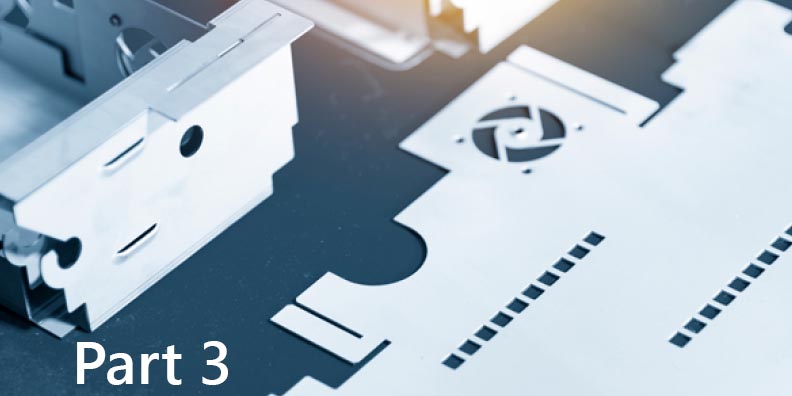Following is part three of a larger article originally printed in the July 2019 issue of The Fabricator.
Using form tools on laser-quality parts: Everybody wants it, and it’s one of the most compelling reasons to buy a punch/laser combo. But depending on the specific form tools you’re using, they can introduce their own complications. Most of these are very familiar to anyone who has run a modern punch press with form tools. But if your only experience is in laser cutting, there can be a learning curve.
For example, say you have a large louver close to a laser-cut feature. If you create the louver first, you might not leave enough room for the laser head to perform its cutting. This is why you might choose to perform forming operations as late in the program as you can, before you lose skeletal integrity.
The Combo Solution
The combo introduces some unique form tool considerations that set it apart even from a stand-alone punching machine. For instance, in classical punching, you’d usually punch all the parts, leave microjoints, then do the forming last. You do risk the microjoints breaking during the forming operation, but if your microtabbing accounts for this risk, then the operation still can be reliable.
But if you have a mechanized part unloader on a punch/laser combo or are using a chute, you can’t perform forming last. You need to cut the part out last so it can be unloaded on-the-fly. You then need to make sure the suction mechanism itself can grasp the formed part.
If you’re evacuating parts via a chute, you might choose to form parts, then perform final cutting to allow the formed part to fall down the chute. The forming occurs late enough in the program that the sheet doesn’t spend a lot of time being moved with high forms, introducing a collision risk; but forming still occurs while the parts themselves are held securely in place along one or multiple edges.
Schedule a demo to see how SigmaNEST addresses this and other Combo machine programming.


